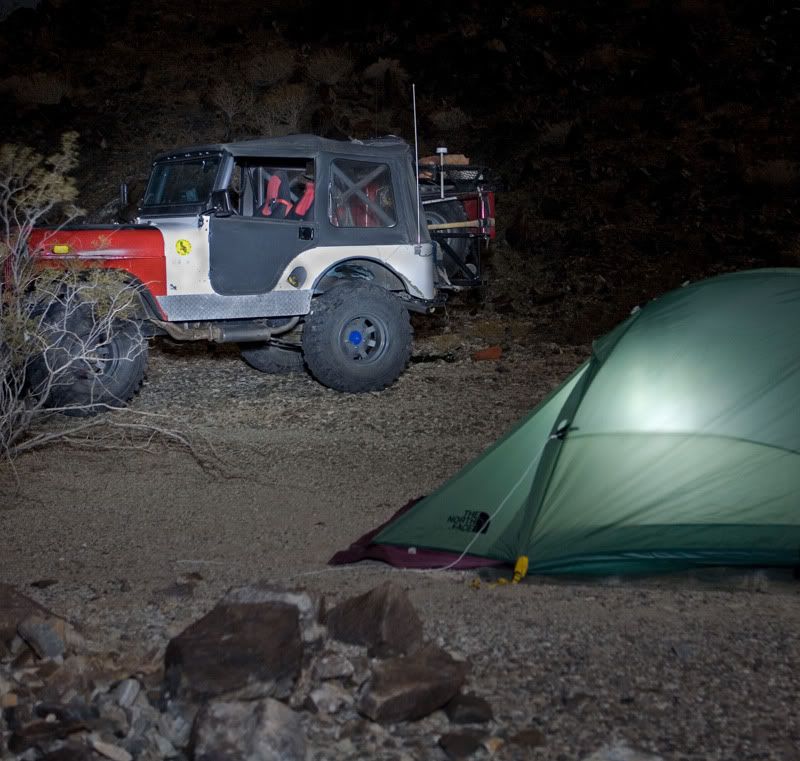Use a lantern.
Simple solution.
How about using a good lantern. Even better.
So just what makes a good lantern? I can still remember camping with my family as a young boy. Pouring (and spilling) the white gas into the old green lantern. Then pumping the tank till my arm was tired. Watching my dad trying to light it while my mom insisted I was too close should it explode. A Good memory but maybe not a good lantern. Actually I still have that old lantern up in the rafters.
Propane has been a big improvement in lanterns. Clean, no spills, reasonably safe. I’ve got several of them. I don’t think any of them are good. One has no fine adjustment for intensity. It’s either blinding bright or practically off. The one that has a nice fine adjustment squeals like a steam boiler about to bust its rivets. Always have to remember to have extra mantles. Because the ones on the lantern don’t fare well on a rough jeep trail. My fat old fingers aren’t as deft as they used to be when tying them on. Don’t even bother with those “clip-on” type mantles. Then there is the broken glass. When I broke the glass on my favorite propane lantern I bought some fine stainless steel mesh and fabricated a replacement. Works great!
My propane lanterns and propane stoves share the same drawback. Those little green, overpriced, always goes empty before the coffee pot comes to a boil propane fuel canisters. More than once I thought I had packed several only to learn I’d be eating cold food and not have coffee in the morning. (Some parts of the desert southwest do not have enough downwood to build a cooking fire). Bought a small 2 gal propane tank that holds enough for a good week. Great for the long weekend trips when there are a bunch of us. But I find it is too big for solo trips in the jeep. Granted with the “hose tree” it will run both the stove and lantern. But that whole ensemble takes up a lot of precious space in an old Jeep.
I have an electric lantern. An older one with big batteries and an incandescent bulb. It has no soul. It gives off a weak, cold glow. Barely useful, except inside the tent, like when my son is camping with me. Now LED lights are great. They use far less current than incandescent bulbs so your battery lasts longer. But I don’t like them for lanterns. However they are great for flashlights. Best flashlight I’ve ever had is a tiny little Sure-Fire.
When I was going through the “bring it all” phase of camping I used a voltage inverter to power a 2 foot fluorescent lamp hung under the 10’X10’ “kitchen” canopy and a few compact fluorescent fixtures elsewhere. Worked great, lots of light for the entire compound. The passing airliners could probably see us!
Last winter I spent 5 days driving solo in the Sonora Desert in my Jeep. I intentionally left the lantern at home. I brought my little Sure-Fire flashlight and an old mini-mag AA flashlight with red filter over the lens. I never really used either of them. Simply didn’t turn them on. I’d get my dinner prepared before it got really dark. Without the flashlights or lanterns to contract my pupils I didn’t need them. There was less than half a moon and even when it set the starlight alone was enough to see. It’s a very enjoyable time to take a hike. Of course with a full moon and eyes adjusted for at least 30 minutes one could easily read the a newspaper by moonlight. When sailing offshore at night it is the rule. No lights on deck and only red light below deck.
I now regularly practice the low-light campsite routine and find the outdoor experience to be much more enjoyable. It is far different than a bright well lit campsite where you can’t see anything but darkness beyond the lanterns cast.
So…. campsite lighting? Forget the lantern, use your eyes. A simpler solution

No comments:
Post a Comment